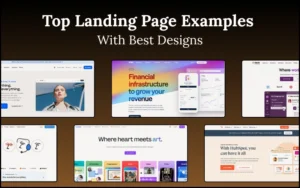Why would you educate web design clients at the first place? Well, it is quite often that designers struggle with clients who don’t understand their work, or don’t trust them as much as they should to untie their hands and let them push their ideas through the project.
The biggest problem here is that designers are too afraid to lose the client, and prefer pretending that the client is the expert. But is it so? It is the designer who knows what needs to be done, and he or she should not be threatened by tricky questions and unreasonable requirements.
At the same time, it is very difficult to prevent users from doing their way, even when you know they have no idea what needs to be done to communicate their message on the website, but still use some broad knowledge to claim that what they’re suggesting can have a huge efficiency impact on the website.
If you’re one of those designers struggling to reaffirm their expert roles and to stay in control, you can start educating your web design clients to overcome nitty-gritty problems and delays:

Table of contents
- Design Isn’t Everything There Is To It
- Improved Communication With Web Design Clients
- Educating Web Design Clients: Web Is Not Print
- Educating Web Design Clients: Set Expectations Before You Manage Them
- There Is No Such Thing As ‘One Small Final Thing’
- More Often Than Rare, The Contract Won’t Mean Anything To Your Web Design Clients
- Don’t Set Unreasonable Deadlines
- Educating Web Design Clients: Avoid Being Adamant
- Final Thoughts: Educating Web Design Clients
Design Isn’t Everything There Is To It

Clients care more about stuff than your design skills when they hire you while designing a website for a client. They’re looking to solve a specific problem, all the way from traffic and conversions, and they need a very precise solution that will eliminate their concerns.
Once it is proven to them that it can be done, they will stop bothering you. You’ll become their ally, and they will become your biggest fans.
Check out this blog to learn about best practices for website design.
Improved Communication With Web Design Clients

Firstly, you receive a brief explaining the problem and listing the expectations. And you’re supposed to develop your own ideas on how to solve it. Once you have them, wrap them up nicely and communicate them in a non-technical language, so that web development clients will share your vision and identify it with their objectives.
This is a critical approach for building a trustful relationship. And a guarantee that you can let your creativity loose without being disturbed every half an hour. As you proceed, provide them with some basic plans and prototypes to see how the solution would work.
Also read: What Is Accessible Web Design?
Educating Web Design Clients: Web Is Not Print

There are website design clients that simply won’t understand that web is different than print mediums, and that there is not an absolute way to transfer to the screen what they’ve drawn on paper, and they are the most difficult to handle.
It is a common case with beginners who know nothing about design operations, but even with older clients looking to push through a specific advertising idea. The other issue with them is that they expect you to know as much as if you had spent most of your lifetime browsing the web and wondered how you never saw what they imagined for their next campaign.
What you need to do to handle such cases is to come into peace with the fact that there are people who simply have no surfing experience, and be patient to educate them and dispel the fake illusions they’re asking for.
Also read: How To Increase Your Visibility As A Web Designer?
Image source: Treze
Another category that will appear here and there is people who imagine their websites and interactive sales brochures, and you need to inform them that even if such thing are possible, it won’t help them make the most of their online presence. If they’re too pushy, let it be. Sometimes it is much better to learn from our own mistakes.
Educating Web Design Clients: Set Expectations Before You Manage Them

Once you’ve hit off with your design business, summarize your offers, terms of use, best business practices, timelines, and communication methods, even if it takes breaking down your entire working practices. The other party needs to know what they’re paying for in advance. They should also be familiar with how work will proceed once matters are settled.
This practice acts as premature troubleshooting against misinterpretations, miscommunications, prolonged deadlines, and confusion in general. The clearer you are with your clients for website development, the more they will trust you.
There Is No Such Thing As ‘One Small Final Thing’

Every experienced designer will confirm it. Clients have the annoying habit of coming up with last-minute requirements. And changing the entire flow of things just before the deadline has been met. As you can guess, the thing has incredibly negative effect on the process, and compromises your capacity to perform your actions in due time.
What you know and clients don’t know is that even the simplest color change can take a lot of time, as you’d have to go back and re-export files and stylesheets, sometimes even requiring you to re-design everything from scratch.
If you ask us, the revision clause should be an inseparable part of every agreement, explaining clients that they need to cover extra charges for every last-minute update. Obviously, don’t go as far as charging for minor changes or skipping revision at all, but think carefully about what you’re going to provide.
Also read: Follow These Tips To Become A better Web Designer
More Often Than Rare, The Contract Won’t Mean Anything To Your Web Design Clients

The reason why there is a contract agreement is that both parties agree to follow certain rules, but this doesn’t stop some clients from bending those rules.
Many of them won’t have an issue with skipping meetings, hiring additional designers, or changing slogans last minute, but what you can do to prevent this is to deprive them legally from obtaining full ownership of the website once they’ve broken whatever that has been agreed.
In case you don’t really know what to include in the contract, let us suggest few ideas that can be useful:
- Scheduled meetings
- Working hours
- Contacting hours
- Milestones
- Licensing of the final product
- Budget plan and restrictions
- Payment rules
- Revision rules
Also read: Effective Web Design Techniques You Should Apply

These are only few of the things you should consider, but they are the most important ones. Without them, you’re literally assigning the entire future of the projects to the client.
Remember that we’re not only suggesting you to make a contract, but seriously advising you to have one. Obviously, the provisions are built together with the client, and he is informed exactly about what is required of him. It is not such a frequent practice nowadays to read contracts, so force the client to do it before he has signed it.
Don’t Set Unreasonable Deadlines

There is hardly any client that won’t mind you unnecessarily prolonging the project – what is much more likely is that they will ask you to do it as fast as possible, often neglecting the fact that even the simplest websites take time to build.
Don’t push yourself to cut time and set impossible deadlines, but try to explain them how much time it would really talk to develop, design, and deploy their project if they want it to look good. Reasonable deadlines are correct deadlines, so don’t settle for anything less than that. What you don’t want is to miss payment just because you agreed to a difficult deadline and worked overtime to achieve it.
Educating Web Design Clients: Avoid Being Adamant

A general attitude is the best one to maintain in web design, and you should therefore avoid being too specific. To start with, this will limit your possibilities and make you go out of your comfort zone where you’re the expert who doesn’t need anybody to control him.
Another important thing to avoid is to choose a very specific niche to work at, because such will require you to use very specific trends and styles that are easy to confuse and to mess up. Instead, share only what has to be shared, choose clients you think you can work with, and build healthy and professional relationships that have a genuine chance to last.
Also read: Great Examples Of Creative Illustration Styles In Web Design
Final Thoughts: Educating Web Design Clients

Educating clients means enabling them to ask reasonable questions and develop logical requests, while at the same time appreciating the value of your knowledge, skills, and efforts. Everybody is happy with streamlined communication. And nothing can easily slide through the cracks to make you waste time and efforts in vain.
Still, let your mistakes teach you how to behave in future, and be ready to face difficulties even when you’ve done your best to educate your web design clients.
Like this post? Check out more amazing web design content here.





